How Technology is Transforming Biodiversity Conservation
The world we live in is a vibrant tapestry of life, teeming with countless species and ecosystems, each playing a crucial role in maintaining the delicate balance of our planet. However, as human activities continue to encroach upon natural habitats, the urgency to protect biodiversity has never been more pressing. Thankfully, technology is stepping up to the plate, offering innovative solutions that are reshaping biodiversity conservation efforts. From the way we collect data to how we engage with communities, technology is revolutionizing our approach to preserving ecosystems and species worldwide.
Imagine a world where conservationists can monitor vast landscapes from the comfort of their homes, where artificial intelligence can predict the behavior of endangered species, and where local communities are empowered to take charge of their natural resources. This is not a distant dream; it is the reality that technology is helping to create. With tools like remote sensing, artificial intelligence, and mobile applications, the conservation landscape is evolving rapidly, making it easier to gather insights, implement strategies, and engage the public in meaningful ways.
In this article, we will delve into the various technological advancements that are driving change in biodiversity conservation. We'll explore how remote sensing technologies are enhancing our ability to monitor ecosystems, how artificial intelligence is optimizing conservation strategies, and how mobile applications are fostering community engagement. By the end, you'll see just how critical these innovations are in the fight to preserve our planet's rich biodiversity.
Remote sensing technologies, such as satellite imagery and aerial drones, have revolutionized the way conservationists monitor ecosystems and wildlife habitats. These tools allow for the collection of crucial data over large areas, providing a bird's-eye view of changes in land use, habitat degradation, and species distribution. Imagine being able to assess the health of a forest or track the migration patterns of a species without ever setting foot in the field! This capability not only saves time and resources but also enables informed decision-making and effective resource management.
Artificial intelligence (AI) is another game-changer in the realm of biodiversity conservation. By analyzing vast amounts of data, AI can predict species behavior, optimize resource allocation, and ultimately enhance the effectiveness of conservation strategies. For instance, machine learning algorithms can sift through thousands of images and sounds to identify species, allowing researchers to track populations and assess biodiversity without disturbing natural habitats. This data-driven approach empowers conservationists to intervene promptly and protect vulnerable populations.
Machine learning applications are being utilized in various ways to support conservation efforts. For example, researchers can use AI to analyze camera trap images, identifying species and counting individuals with remarkable accuracy. This not only streamlines the data collection process but also helps in monitoring endangered species more effectively. The ability to gather data without physically intruding on wildlife habitats is akin to having a stealthy guardian watching over our planet's most vulnerable inhabitants.
Data-driven approaches are empowering conservationists to monitor endangered species more effectively than ever before. By utilizing advanced analytics, conservationists can ensure timely interventions to protect vulnerable populations and their habitats. Imagine being able to predict when a species might face a decline due to environmental changes and taking proactive measures to mitigate that impact. This is the power of data-driven conservation!
Predictive analytics is a powerful tool that helps conservation planners forecast future changes in ecosystems. By analyzing historical data and current trends, planners can identify potential threats and develop proactive measures to enhance biodiversity resilience. It's like having a crystal ball that allows us to anticipate challenges before they arise, ensuring that we are always one step ahead in our efforts to protect the environment.
One of the most exciting aspects of technology's role in biodiversity conservation is how it facilitates community engagement. By empowering local populations to participate in data collection and habitat restoration, technology fosters a sense of stewardship for their natural surroundings. When communities feel connected to their environment, they are more likely to take action to protect it. This collaborative approach not only enhances conservation efforts but also strengthens community bonds and promotes sustainable practices.
Mobile applications are emerging as powerful tools for conservationists, enabling real-time data sharing, citizen science initiatives, and raising awareness about biodiversity issues among the general public. These apps can turn anyone into a citizen scientist, allowing them to contribute valuable data on local wildlife and habitats. It's an exciting time to be involved in conservation, as technology bridges the gap between experts and everyday people.
Crowdsourcing platforms allow individuals to contribute valuable biodiversity data, enhancing research efforts and enabling conservationists to gather insights from a diverse range of observers. Imagine a world where thousands of people are simultaneously collecting data on local flora and fauna, creating a rich tapestry of information that can inform conservation strategies. This collective effort amplifies the impact of conservation initiatives and fosters a sense of community ownership.
Educational mobile apps promote awareness and understanding of biodiversity conservation, engaging users with interactive content and encouraging responsible environmental practices. These tools not only inform users about local ecosystems but also inspire them to take action in their own communities. By making education accessible and engaging, technology plays a crucial role in cultivating the next generation of conservationists.
- How is technology helping in biodiversity conservation? Technology aids in data collection, monitoring ecosystems, and engaging communities, making conservation efforts more effective.
- What role does artificial intelligence play in conservation? AI analyzes large datasets to predict species behavior and optimize resource allocation, enhancing conservation strategies.
- Can anyone contribute to biodiversity data collection? Yes! Mobile applications and crowdsourcing platforms allow citizens to participate in data collection and conservation efforts.
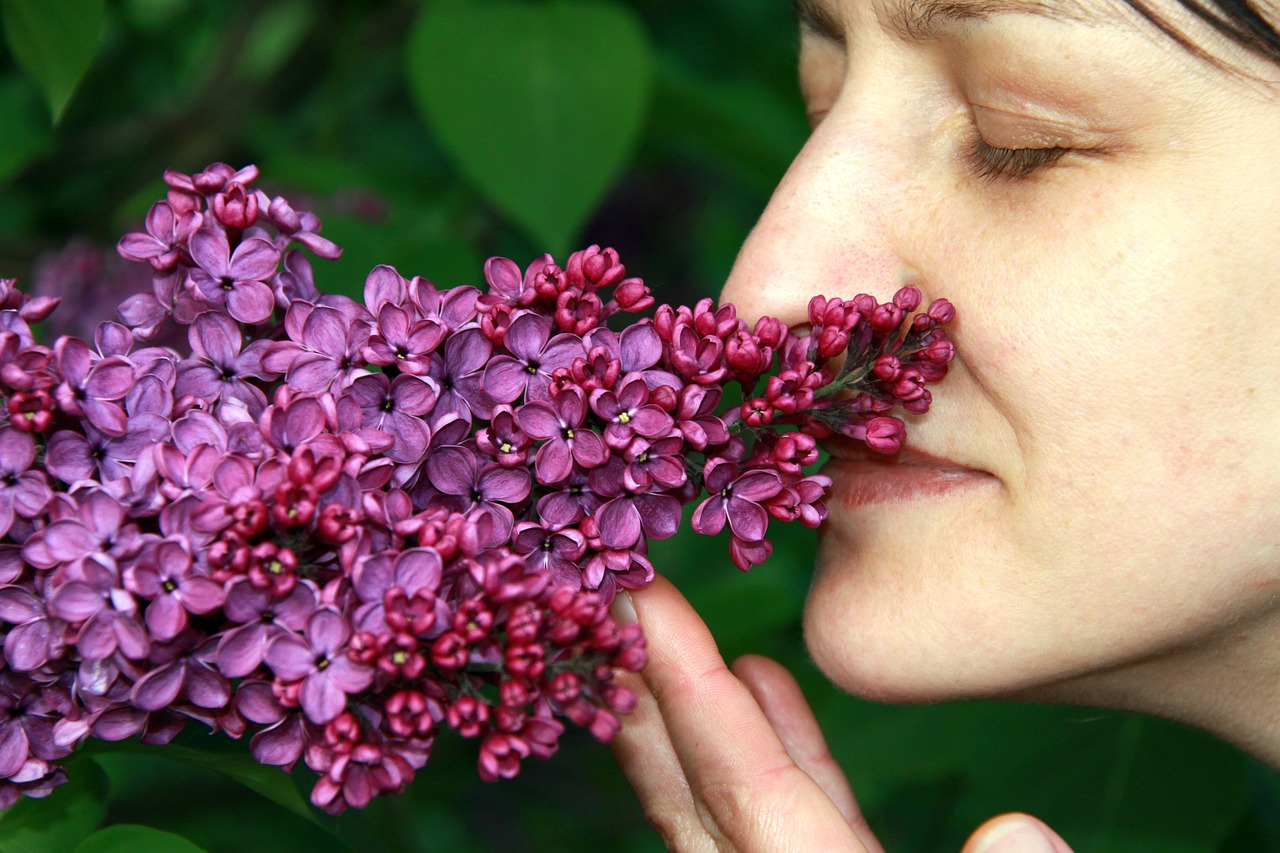
Remote Sensing Technologies
Remote sensing technologies are revolutionizing the way we approach biodiversity conservation. Imagine being able to monitor vast swathes of forests or coral reefs without ever setting foot in these delicate ecosystems. This is precisely what tools like satellite imagery and aerial drones allow conservationists to do. They provide a bird's-eye view of our planet, enabling researchers to collect crucial data on wildlife habitats and ecosystem health with remarkable efficiency.
One of the most significant advantages of remote sensing is its ability to gather data over large areas in a fraction of the time it would take using traditional methods. For instance, satellite imagery can capture changes in land use, deforestation rates, and even shifts in biodiversity over time. This data is invaluable for informed decision-making and resource management, as it allows conservationists to identify areas in need of immediate attention or protection.
Moreover, the integration of drone technology has taken remote sensing to new heights—literally! Drones can fly low over areas that are hard to reach or dangerous for humans, capturing high-resolution images and data on wildlife populations and their habitats. This not only minimizes human impact on these environments but also provides real-time data that can be analyzed on the spot. For example, drones equipped with thermal imaging can detect heat signatures from animals, allowing researchers to track endangered species without disturbing them.
Here’s a quick overview of the key benefits of remote sensing technologies in biodiversity conservation:
- Efficiency: Rapid data collection over large areas.
- Cost-Effectiveness: Reduces the need for extensive fieldwork.
- Minimal Disturbance: Non-invasive monitoring methods.
- Real-Time Data: Immediate insights for timely interventions.
As we face increasing threats to biodiversity from climate change, habitat destruction, and pollution, the role of remote sensing technologies becomes ever more critical. They are not just tools; they are lifelines for conservationists striving to protect our planet's rich tapestry of life. By harnessing these technologies, we can make informed decisions that lead to effective conservation strategies, ensuring that future generations inherit a world teeming with biodiversity.
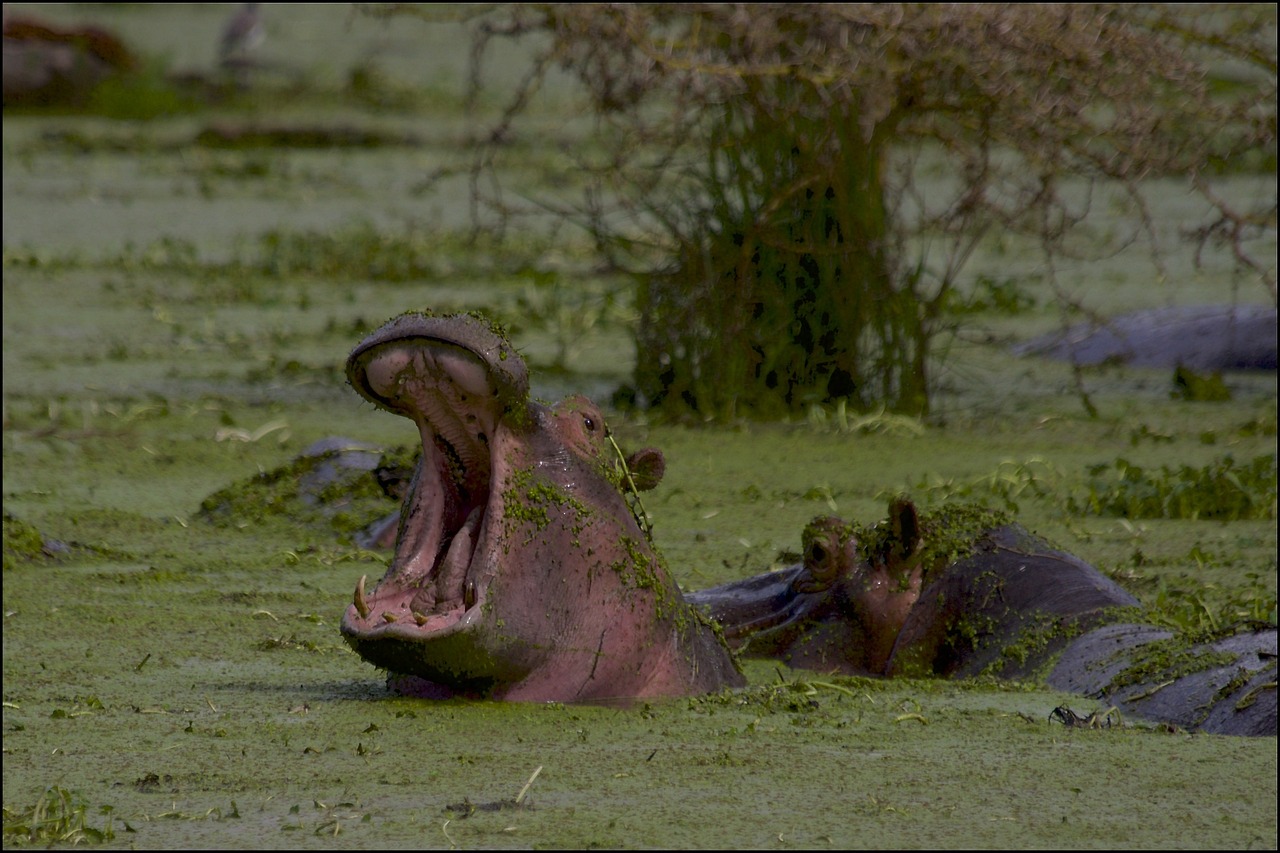
Artificial Intelligence in Conservation
Artificial Intelligence (AI) is no longer just a futuristic concept; it is actively reshaping the landscape of biodiversity conservation. Imagine a world where algorithms can analyze vast amounts of data in the blink of an eye, predicting species behavior and optimizing resource allocation with remarkable accuracy. This is not science fiction; it’s happening right now! AI is enhancing the effectiveness of conservation strategies, making it possible to tackle challenges that once seemed insurmountable.
One of the most exciting applications of AI in conservation is its ability to process and analyze data at unprecedented speeds. Conservationists are now equipped with tools that can sift through terabytes of information, identifying patterns and trends that would take humans months or even years to uncover. For instance, AI can analyze satellite images to detect changes in land use or habitat encroachment, allowing for timely interventions. Think of it as having a supercharged assistant that never tires, always on the lookout for potential threats to our ecosystems.
Machine learning, a subset of AI, is particularly powerful in the field of species identification. By utilizing algorithms trained on extensive datasets, researchers can identify species from images and sounds with remarkable precision. This technology enables scientists to track populations and assess biodiversity without disturbing natural habitats. For example, a simple smartphone app can now recognize bird calls, contributing to citizen science initiatives by allowing anyone to record and submit their observations. It’s like having a field guide in your pocket, but way more advanced!
Data-driven approaches are revolutionizing how we monitor endangered species. With AI, conservationists can analyze data from various sources—including camera traps, acoustic sensors, and satellite imagery—to gain insights into animal behavior and habitat usage. This comprehensive monitoring ensures timely interventions to protect vulnerable populations. Imagine knowing exactly when and where to deploy resources to save a species from extinction. That’s the power of AI at work!
Predictive analytics is another game-changer in conservation planning. By forecasting future changes in ecosystems, conservation planners can take proactive measures to mitigate threats and enhance biodiversity resilience. For instance, if AI predicts that a particular habitat will be affected by climate change, conservationists can implement strategies to protect that area before the damage occurs. It’s like having a crystal ball that helps us anticipate and respond to challenges before they escalate.
In summary, the integration of AI into biodiversity conservation is not just a trend; it’s a necessity for effective and sustainable management of our planet’s resources. By leveraging data and technology, we can make informed decisions that protect our natural world for future generations. The potential is immense, and as technology continues to evolve, so too will our ability to safeguard the incredible diversity of life on Earth.
- What is AI in the context of conservation?
AI refers to the use of algorithms and machine learning to analyze data and make predictions that aid in biodiversity conservation efforts. - How does machine learning contribute to species identification?
Machine learning algorithms can process images and sounds to accurately identify species, allowing researchers to track populations without invasive methods. - Can AI predict future changes in ecosystems?
Yes, predictive analytics can help forecast changes, enabling conservationists to take proactive measures to protect vulnerable habitats and species. - How can I contribute to conservation efforts using technology?
You can participate in citizen science initiatives, use mobile apps for species identification, and engage in local conservation projects.
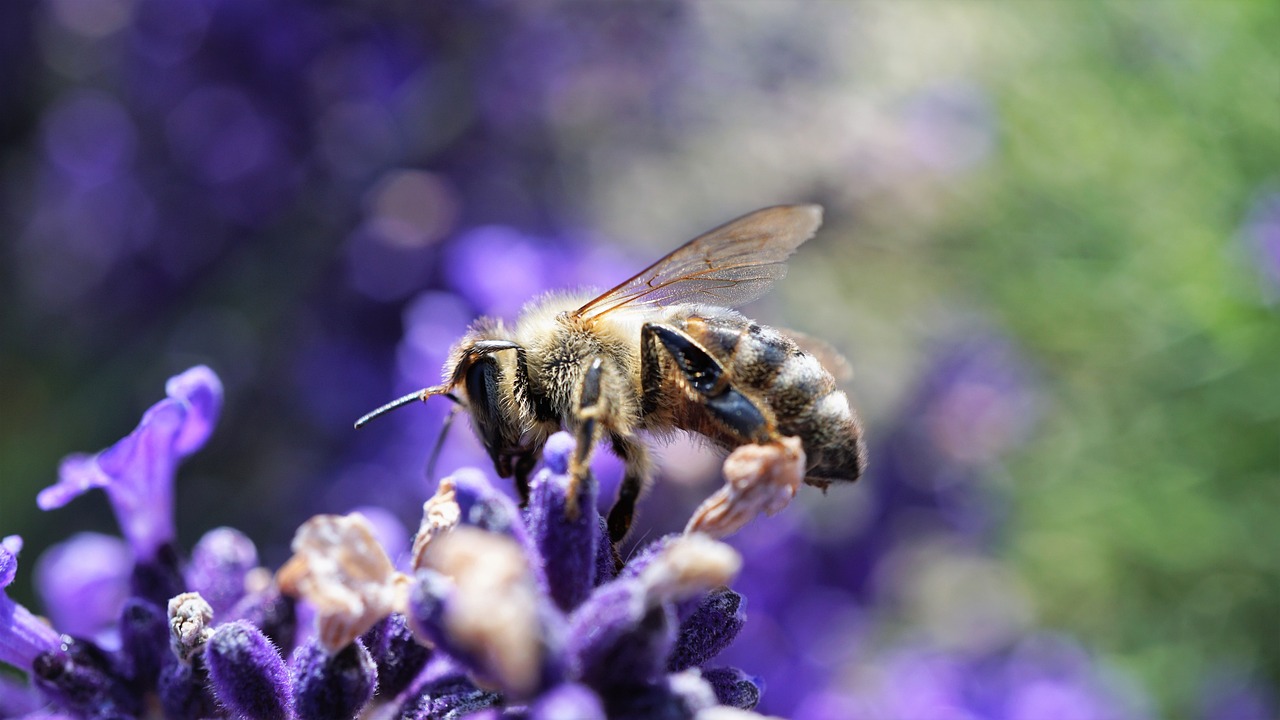
Machine Learning Applications
Machine learning is a powerful tool that is reshaping the landscape of biodiversity conservation in remarkable ways. Imagine being able to identify a rare bird species or track the movements of endangered animals without ever stepping foot in their habitat. This is the magic of machine learning applications in conservation. By utilizing algorithms that can learn from data, researchers are now able to analyze images and sounds collected from various ecosystems, making it easier to monitor wildlife populations.
For instance, researchers can deploy camera traps equipped with AI technology that automatically identifies species based on their images. This not only saves time but also minimizes human interference in delicate environments. The ability to process and analyze vast amounts of data quickly means that conservationists can focus their efforts where they are most needed. It’s like having a supercharged assistant that never tires and can sift through data at lightning speed!
Furthermore, sound recognition technology is another exciting application of machine learning. By analyzing audio recordings from different habitats, scientists can identify the calls of various species, even those that are rarely seen. This method is particularly useful for monitoring elusive creatures like the nightingale or the howler monkey. With this technology, researchers can gather important information about population sizes, breeding patterns, and even the health of ecosystems.
The impact of machine learning extends beyond just identification. It also plays a crucial role in data-driven species monitoring. By leveraging machine learning, conservationists can track endangered species more effectively, ensuring that timely interventions can be made to protect vulnerable populations. For example, if a certain species is found to be declining in numbers, conservationists can quickly mobilize resources to address the threats they face, whether it’s habitat loss, poaching, or climate change.
Moreover, predictive analytics powered by machine learning helps conservation planners forecast future changes in ecosystems. By analyzing historical data and current trends, these tools can anticipate potential threats and provide insights that lead to proactive measures. Imagine being able to predict a forest's health or the migration patterns of a species before issues arise! This kind of foresight is invaluable in enhancing biodiversity resilience.
In summary, the applications of machine learning in biodiversity conservation are not just innovative—they are transformational. By making data collection and analysis more efficient, machine learning empowers conservationists to make informed decisions that can significantly impact the survival of various species and the health of ecosystems around the globe. It’s an exciting time to be involved in conservation, as technology continues to open new doors to understanding and protecting our planet’s rich biodiversity.
- What is machine learning in the context of biodiversity conservation?
Machine learning refers to the use of algorithms that allow computers to learn from data and make predictions or decisions without being explicitly programmed. In biodiversity conservation, it helps in identifying species, monitoring populations, and analyzing ecological data. - How does machine learning improve species monitoring?
Machine learning improves species monitoring by automating the identification process through image and sound recognition, allowing researchers to gather data more efficiently and with less disturbance to wildlife. - Can machine learning predict future ecological changes?
Yes, machine learning can analyze historical and current data to forecast potential ecological changes, helping conservationists take proactive measures to mitigate threats to biodiversity. - What role does technology play in community engagement for conservation?
Technology facilitates community engagement by providing tools for real-time data sharing and citizen science initiatives, empowering local populations to participate actively in conservation efforts.

Data-Driven Species Monitoring
In the realm of biodiversity conservation, has emerged as a game-changer, revolutionizing the way we understand and protect endangered species. Imagine having the ability to track the movements and behaviors of wildlife with pinpoint accuracy, all thanks to advanced technologies and data analytics. This approach not only enhances our knowledge of various species but also enables timely interventions that could mean the difference between survival and extinction.
Through the use of sophisticated tools such as GPS collars, camera traps, and satellite tracking, conservationists are now able to gather vast amounts of data on species populations and their habitats. This data is then analyzed to identify patterns and trends, which can inform conservation strategies. For example, if a particular species is found to be migrating earlier due to climate change, conservationists can adjust their protection measures accordingly.
Furthermore, the integration of big data analytics allows for a comprehensive view of the ecosystem. By collecting data from various sources—like weather patterns, human activities, and habitat conditions—researchers can create a more holistic understanding of the factors affecting species survival. This method not only helps in monitoring individual species but also assesses the health of entire ecosystems.
One of the most exciting aspects of data-driven monitoring is its ability to facilitate real-time decision-making. Imagine a scenario where a conservation team receives an alert about a sudden decline in a species population due to poaching or habitat destruction. With immediate access to data, they can deploy resources swiftly to mitigate the threat. This proactive approach is crucial in today’s fast-paced world, where the survival of many species hangs by a thread.
In addition to technological advancements, community involvement plays a vital role in data-driven species monitoring. Local residents often possess invaluable knowledge about their surroundings and can contribute significantly to data collection efforts. By engaging communities through citizen science initiatives, conservationists can gather diverse insights that enrich their understanding of local ecosystems. This collaborative effort not only enhances data collection but also fosters a sense of ownership among community members, encouraging them to protect their natural heritage.
To sum up, data-driven species monitoring is not just about collecting numbers and statistics; it's about telling the story of our planet's wildlife. By leveraging technology and community engagement, we can create a brighter future for endangered species and ensure that our ecosystems thrive. The next time you think about conservation, remember that every piece of data collected brings us one step closer to understanding and protecting the incredible diversity of life on Earth.
- What is data-driven species monitoring?
Data-driven species monitoring involves the use of technology and analytics to track and understand wildlife populations and their habitats. - How does technology aid in species monitoring?
Technology such as GPS, camera traps, and satellite tracking allows for the collection of real-time data on species movements and behaviors. - Why is community engagement important in conservation?
Community involvement enriches data collection efforts and fosters a sense of stewardship, leading to better conservation outcomes. - What role does big data play in conservation?
Big data analytics helps create a comprehensive view of ecosystems, allowing for informed decision-making and proactive conservation strategies.
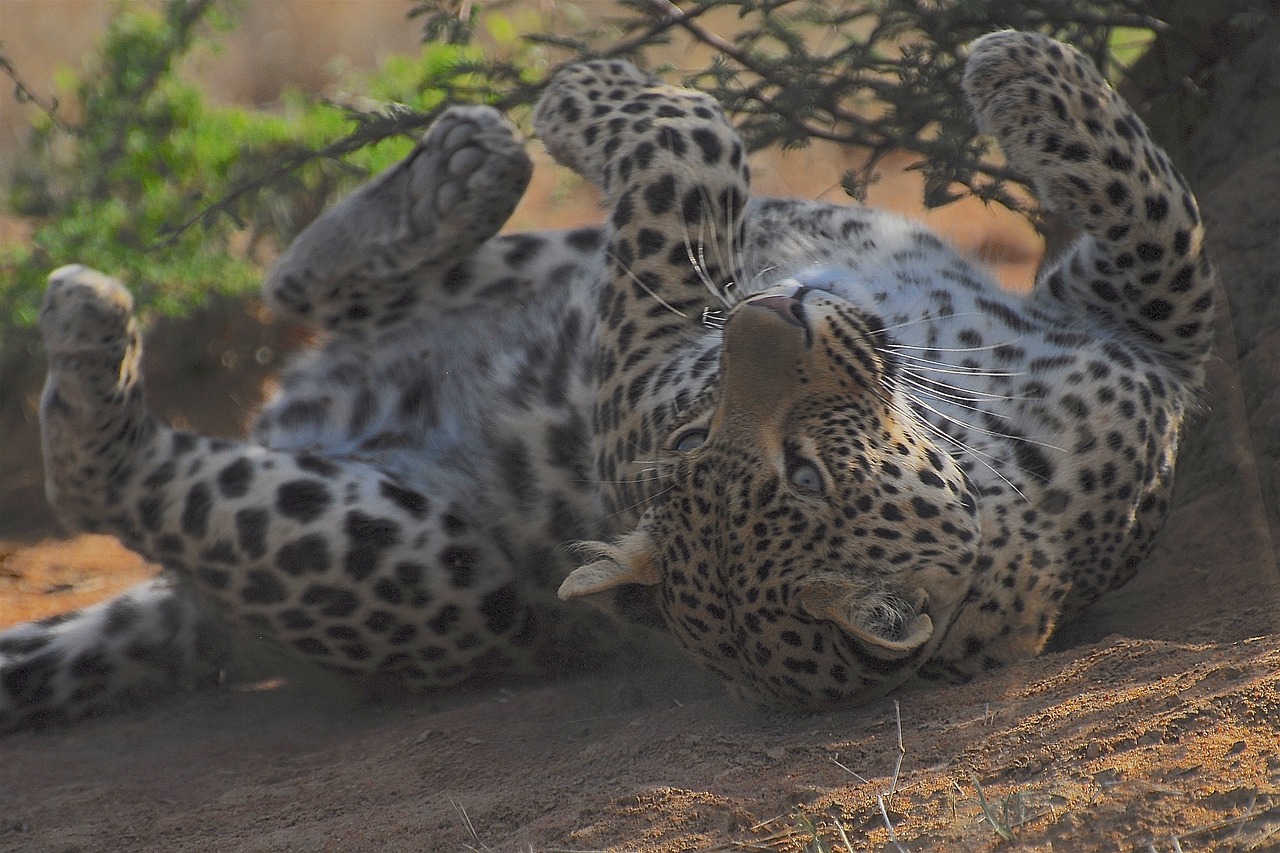
Predictive Analytics for Conservation Planning
Predictive analytics is quickly becoming a game-changer in the field of biodiversity conservation. Imagine having the ability to foresee changes in ecosystems before they occur. This capability allows conservation planners to be proactive rather than reactive, which is crucial in a world where species are disappearing at an alarming rate. By utilizing advanced statistical techniques and data modeling, predictive analytics can provide insights that were previously unimaginable.
At its core, predictive analytics involves analyzing historical and current data to identify patterns and trends. This can be particularly useful in understanding how various factors—such as climate change, human activity, and natural disasters—affect biodiversity. For instance, by examining past data on species migration patterns, conservationists can predict future movements and adjust their strategies accordingly. This not only helps in protecting endangered species but also in preserving entire ecosystems that are at risk.
To illustrate the impact of predictive analytics, consider the following table that summarizes key benefits:
| Benefit | Description |
|---|---|
| Proactive Measures | Allows for early intervention to protect vulnerable species and habitats. |
| Resource Allocation | Optimizes the use of resources by identifying areas that need immediate attention. |
| Informed Decision-Making | Provides data-driven insights that enhance conservation strategies. |
| Scenario Planning | Enables conservationists to simulate various scenarios and their potential impacts. |
Moreover, predictive analytics can be integrated with other technologies, such as Geographic Information Systems (GIS), to visualize data in a way that is easy to understand. This integration allows conservationists to create detailed maps that highlight areas of concern, making it easier to communicate the urgency of conservation efforts to stakeholders and the public.
In addition, predictive analytics can help identify potential threats before they escalate. For example, by analyzing environmental data, conservationists can predict how rising temperatures might affect a particular species' habitat. This foresight enables them to implement conservation strategies that can mitigate these threats, such as creating wildlife corridors or restoring habitats that are becoming unsuitable.
In summary, predictive analytics is not just a buzzword; it is a vital tool that empowers conservation planners to make smarter, data-driven decisions. The ability to forecast changes and prepare for them can mean the difference between life and death for many species and ecosystems. As technology continues to evolve, the potential for predictive analytics in conservation will only grow, paving the way for more effective and sustainable biodiversity conservation strategies.
- What is predictive analytics in conservation?
Predictive analytics involves using historical and current data to forecast future changes in ecosystems and species behavior, allowing for proactive conservation planning. - How can predictive analytics help endangered species?
By predicting potential threats and changes in habitat conditions, conservationists can implement timely interventions to protect endangered species. - Is predictive analytics only useful for large ecosystems?
No, predictive analytics can be applied to various scales, from local habitats to global ecosystems, enhancing conservation efforts at every level. - What technologies complement predictive analytics?
Technologies such as Geographic Information Systems (GIS) and artificial intelligence (AI) are often used alongside predictive analytics to enhance data analysis and visualization.
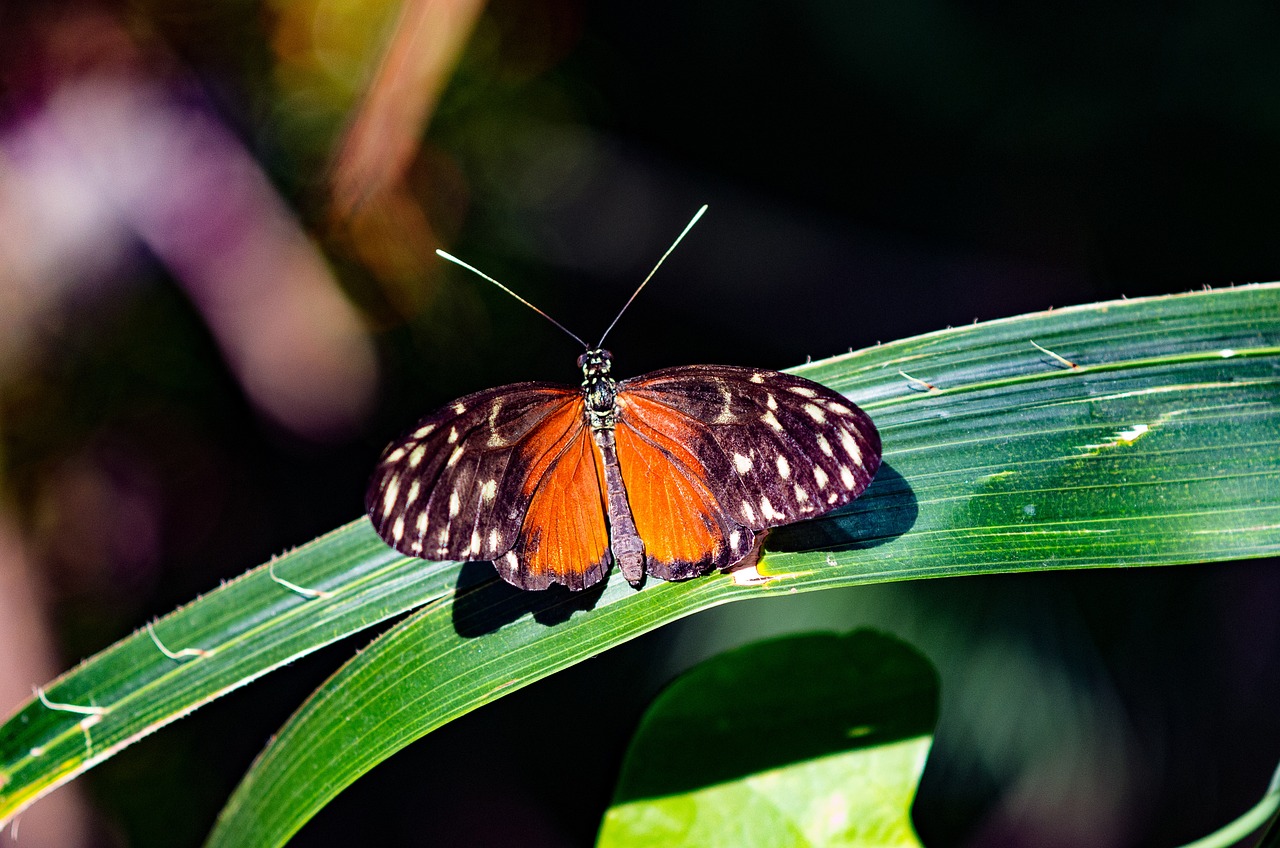
Community Engagement through Technology
In today's world, technology has become a bridge connecting conservationists with local communities, making biodiversity conservation a collective endeavor. Imagine a scenario where every individual in a community feels empowered to contribute to the preservation of their natural surroundings. This is not just a dream; it is becoming a reality through innovative technological solutions. By leveraging tools such as mobile apps, social media platforms, and online forums, conservation efforts are increasingly involving the very people who live alongside these ecosystems.
One of the most exciting aspects of this technological transformation is the ability for local populations to participate actively in data collection. For instance, mobile applications allow individuals to report sightings of endangered species, document changes in their habitats, and even share photographs or audio recordings of wildlife. This real-time data not only enriches the conservation database but also fosters a sense of ownership and responsibility among community members. When people see their contributions making a tangible impact, it ignites a passion for conservation that can last a lifetime.
Moreover, technology facilitates communication between conservationists and local communities, breaking down barriers that may have previously existed. Through social media campaigns, webinars, and interactive workshops, conservation organizations can educate communities about the importance of biodiversity and the specific actions they can take to protect it. This two-way communication is crucial; it allows conservationists to understand the unique challenges faced by communities and to tailor their strategies accordingly. As a result, conservation efforts become more relevant and effective.
To illustrate the impact of community engagement through technology, consider the following table showcasing key benefits:
| Benefits | Description |
|---|---|
| Increased Participation | Technology empowers individuals to take part in conservation efforts, leading to greater community involvement. |
| Real-Time Data Collection | Mobile apps enable users to report ecological data instantly, aiding research and monitoring. |
| Enhanced Communication | Social media and online platforms facilitate dialogue between conservationists and communities. |
| Education and Awareness | Interactive tools and resources increase understanding of biodiversity issues among the public. |
Furthermore, educational tools and resources play a significant role in promoting awareness and understanding of biodiversity conservation. Mobile applications designed for educational purposes can engage users with interactive content, quizzes, and challenges that encourage responsible environmental practices. This gamification of conservation not only makes learning fun but also instills a deeper appreciation for nature in individuals of all ages.
In conclusion, the integration of technology in community engagement is a game-changer for biodiversity conservation. By empowering local populations to participate actively, fostering open communication, and providing educational resources, we can create a robust network of conservation advocates. It's a win-win situation where technology not only serves the goals of conservationists but also enriches the lives of those who live in and around these vital ecosystems.
- How can I get involved in local conservation efforts? Many organizations offer volunteer opportunities, and mobile apps can help you track local conservation projects.
- What technologies are being used in conservation? Technologies like drones, AI, and mobile apps are commonly used to monitor wildlife and engage communities.
- Can technology really make a difference in biodiversity conservation? Absolutely! Technology enhances data collection, community engagement, and awareness, all of which are crucial for effective conservation.
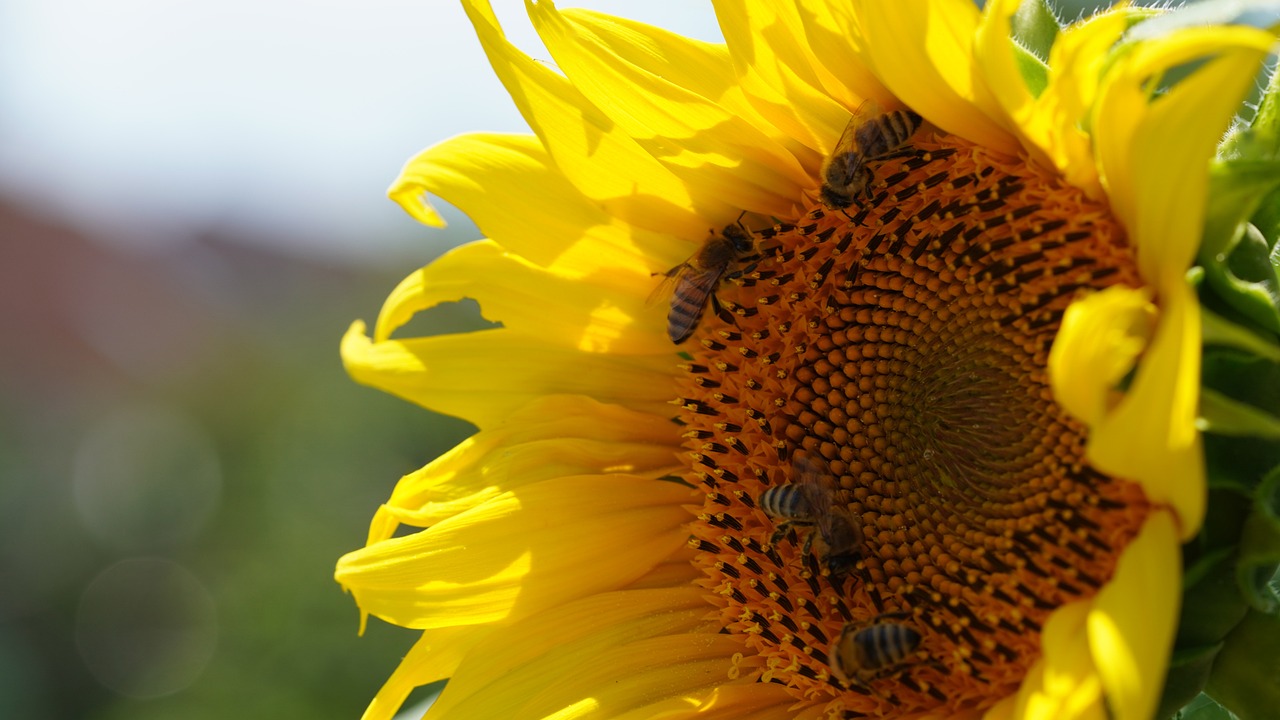
Mobile Applications for Conservation
In today's fast-paced world, mobile applications are emerging as powerful allies in the fight for biodiversity conservation. These apps are not just tools; they are gateways that connect passionate individuals with the pressing issues facing our planet's ecosystems. Imagine being able to contribute to conservation efforts right from your smartphone! With a few taps, you can help track endangered species, report environmental hazards, or even participate in citizen science projects. This revolutionary approach to conservation is not just about technology; it’s about community empowerment and global participation.
One of the most exciting aspects of mobile applications for conservation is their ability to facilitate real-time data sharing. Conservationists can now gather and disseminate information quickly, ensuring that critical data is available when it’s needed the most. For example, a hiker who spots an endangered species can instantly upload their findings using a dedicated app. This not only enriches biodiversity databases but also provides researchers with immediate insights into species distribution and behavior. The beauty of this system lies in its ability to harness the collective power of everyday people. By turning ordinary citizens into data collectors, we can create a more comprehensive picture of our natural world.
Moreover, mobile applications are crucial in raising awareness about biodiversity issues. They often feature interactive content that engages users, making learning about conservation both fun and educational. Imagine a game that teaches you about local flora and fauna while encouraging you to explore your environment. These educational tools are designed to foster a sense of responsibility and stewardship towards nature. They empower users to make informed decisions, whether it’s choosing sustainable products or participating in local conservation efforts.
To illustrate the impact of mobile applications, consider the following table that highlights some popular conservation apps and their features:
| App Name | Features | Purpose |
|---|---|---|
| iNaturalist | Species identification, community sharing | Track and share biodiversity observations |
| Wildlife Tracker | Real-time tracking, alert notifications | Monitor endangered species |
| PlantNet | Plant identification, educational resources | Engage users in plant conservation |
As we delve deeper into the realm of mobile technology, it's essential to recognize the role of crowdsourcing in conservation efforts. Crowdsourcing platforms allow individuals to contribute valuable biodiversity data, enhancing research initiatives and enabling conservationists to gather insights from a diverse range of observers. This democratization of data collection not only enriches the scientific community but also fosters a sense of ownership among users. When people see their contributions making a difference, it motivates them to stay engaged and informed.
In conclusion, mobile applications are transforming the landscape of biodiversity conservation. They are not just technological advancements; they are tools that empower individuals, foster community engagement, and enhance our understanding of the natural world. By leveraging the power of our smartphones, we can all play a part in protecting the planet's rich biodiversity. So, the next time you reach for your phone, think about how you can use it to make a positive impact on the environment!
- How can I get involved in conservation efforts through mobile apps? Many apps like iNaturalist and Wildlife Tracker allow you to contribute data and observations directly from your phone.
- Are these apps free to use? Yes, most conservation apps are free, although some may offer premium features for a fee.
- Can I trust the data collected through these apps? While user-generated data is valuable, it is often verified by experts to ensure accuracy.

Crowdsourcing Conservation Data
Crowdsourcing conservation data is a groundbreaking approach that taps into the collective power of individuals to gather crucial information about biodiversity. Imagine a world where thousands of eyes are watching over our planet's ecosystems, each person contributing valuable observations that can help protect endangered species and fragile habitats. This is not just a dream; it's a reality made possible by technology. By leveraging smartphones and internet connectivity, conservationists can engage citizens in meaningful ways, turning them into active participants in the fight to preserve our natural world.
One of the most exciting aspects of crowdsourced data collection is the diversity of contributions that can be gathered. From amateur birdwatchers snapping photos of their local avian visitors to hikers documenting rare plant species, every observation counts. These contributions can be aggregated into extensive databases that help researchers monitor biodiversity trends over time. For instance, platforms like iNaturalist and eBird allow users to upload their findings, which are then verified by experts, creating a rich repository of data that can inform conservation strategies.
Moreover, crowdsourcing can significantly enhance the reach of conservation initiatives. With the right mobile applications and social media campaigns, organizations can engage communities that might not otherwise have the resources or knowledge to participate in conservation efforts. This engagement fosters a sense of ownership and responsibility towards local ecosystems, making conservation a community-driven endeavor. When people feel connected to their environment, they are more likely to take action to protect it.
However, it’s essential to recognize that crowdsourcing is not without its challenges. The quality of data can vary, and ensuring that contributions are accurate and reliable is crucial. To address this, many platforms implement verification processes, where experts review submissions before they are officially recorded. This not only helps maintain data integrity but also educates the community about the importance of accurate reporting in conservation.
As we look toward the future, the potential for crowdsourced conservation data continues to grow. With advancements in technology, such as machine learning and artificial intelligence, the ability to analyze this data will only improve. Imagine algorithms that can sift through thousands of user-submitted images to identify species or detect changes in habitat conditions over time. This synergy between human observation and technological analysis can lead to more effective conservation strategies and timely interventions.
In conclusion, crowdsourcing conservation data represents a powerful tool in the arsenal of biodiversity conservation. By harnessing the enthusiasm and insights of individuals from all walks of life, we can create a more comprehensive understanding of our planet's ecosystems. As we continue to face unprecedented challenges in the realm of environmental conservation, the collective effort of everyday citizens could be the key to preserving the rich tapestry of life on Earth.
- What is crowdsourcing in conservation? Crowdsourcing in conservation refers to the practice of engaging the public to contribute data and observations about wildlife and ecosystems, enhancing the efforts of conservationists.
- How can I participate in crowdsourced conservation? You can participate by using mobile apps like iNaturalist or eBird to submit your observations of plants and animals in your area.
- What are the benefits of crowdsourcing conservation data? Crowdsourcing increases the volume of data collected, fosters community engagement, and can lead to better-informed conservation strategies.
- Are there challenges with crowdsourcing data? Yes, challenges include ensuring data accuracy and reliability, which is often addressed through expert verification processes.
- How does technology improve crowdsourced data collection? Technology, such as mobile apps and AI, enhances data collection by making it easier for individuals to contribute and for researchers to analyze large datasets.
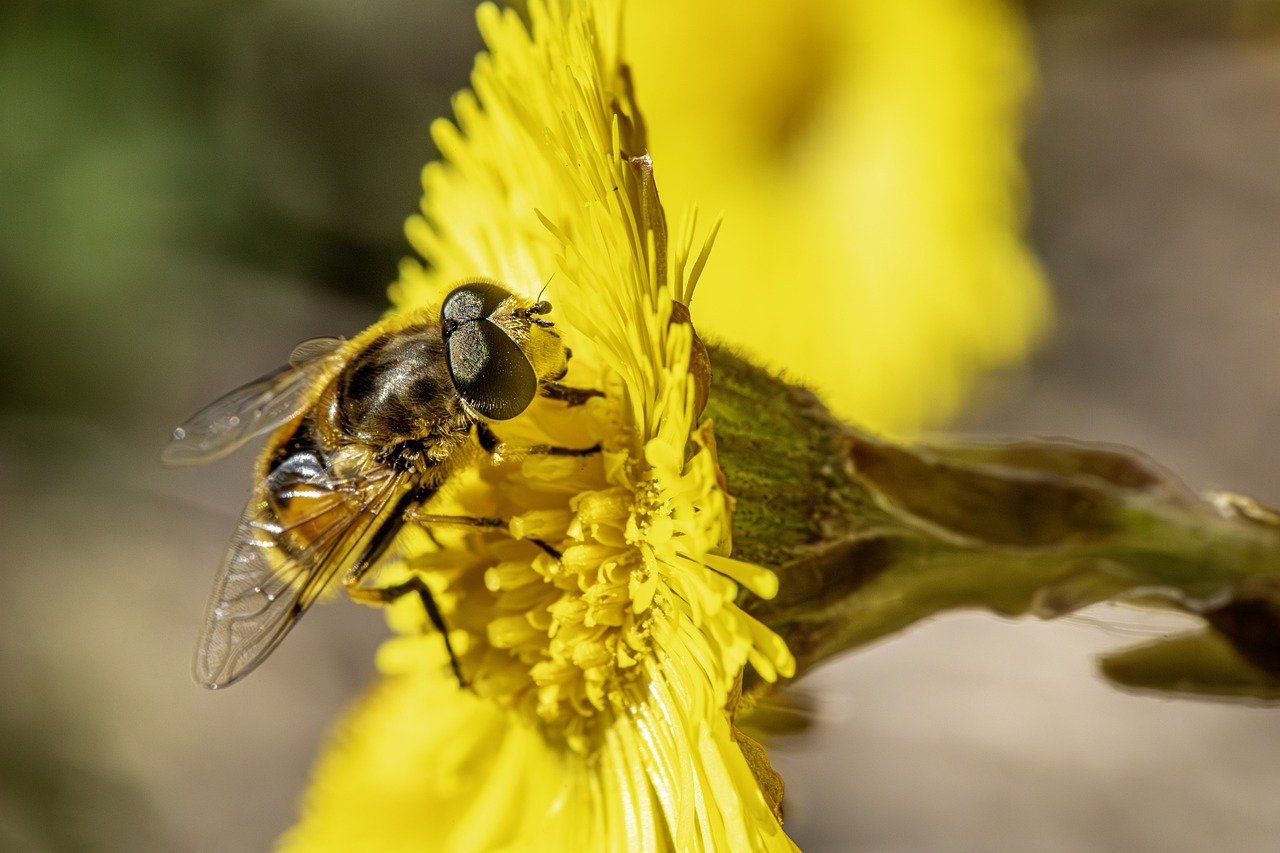
Educational Tools and Resources
In the realm of biodiversity conservation, education plays a pivotal role in shaping public understanding and fostering a culture of stewardship toward the environment. With the advent of technology, educational tools and resources have become more accessible and engaging than ever before. Mobile applications, interactive websites, and online courses are just a few examples of how technology is bridging the knowledge gap and empowering individuals to take action.
One of the most exciting developments in this area is the rise of interactive mobile applications. These apps are designed not only to inform users about different species and ecosystems but also to engage them in practical conservation efforts. For instance, some apps allow users to identify local flora and fauna through image recognition technology, transforming a simple walk in the park into an educational adventure. Imagine pointing your phone at a tree and instantly learning about its ecological role, growth habits, and conservation status. This kind of immediate access to information makes learning about biodiversity both fun and impactful.
Moreover, many educational platforms now offer online courses tailored specifically to conservation topics. These courses often include video lectures, quizzes, and interactive discussions, making it easier for learners of all ages to grasp complex ecological concepts. The flexibility of online learning means that anyone, anywhere, can dive deep into subjects like ecosystem management, wildlife protection, and climate change mitigation. This democratization of knowledge is crucial in building a global community of informed conservationists.
To enhance the learning experience, many organizations have developed educational resources that can be easily integrated into schools and community programs. These resources often include lesson plans, activity guides, and multimedia content designed to engage students in hands-on learning. For example, a school might use a resource kit that includes field guides and data collection tools, allowing students to conduct real-world biodiversity assessments in their local environment. Such experiential learning not only reinforces classroom teachings but also instills a sense of responsibility toward nature.
Furthermore, technology facilitates the creation of virtual reality (VR) experiences that immerse users in different ecosystems around the globe. Imagine being able to explore the Amazon rainforest or the Great Barrier Reef from the comfort of your home! These VR experiences can transport users into the heart of biodiversity hotspots, allowing them to witness the beauty and fragility of these ecosystems firsthand. Such immersive experiences can be powerful motivators for conservation action, as they foster a deeper emotional connection to nature.
In addition to these tools, there are numerous platforms that promote citizen science, encouraging individuals to contribute data on local wildlife and habitats. By participating in these initiatives, community members can play an active role in conservation efforts while learning about the species that inhabit their surroundings. This not only enriches the data available to researchers but also empowers individuals to become advocates for their local ecosystems.
In summary, the integration of technology into educational tools and resources is transforming the landscape of biodiversity conservation. By making learning more engaging, accessible, and interactive, these innovations are fostering a new generation of conservationists who are equipped with the knowledge and passion to protect our planet's precious biodiversity.
- What types of educational tools are available for biodiversity conservation?
There are various tools including mobile apps, online courses, interactive websites, and VR experiences that help educate individuals about biodiversity and conservation efforts. - How can I get involved in citizen science?
Many platforms allow you to contribute data on local wildlife, such as iNaturalist or eBird. You can participate by observing and reporting your findings. - Are there resources for teachers to use in the classroom?
Yes, many organizations provide free lesson plans and activity guides that can be integrated into school curriculums to teach students about biodiversity.
Frequently Asked Questions
- What role does technology play in biodiversity conservation?
Technology plays a crucial role in biodiversity conservation by providing innovative tools and methods for monitoring ecosystems, analyzing data, and engaging communities. With advancements like remote sensing, artificial intelligence, and mobile applications, conservationists can make informed decisions to protect endangered species and their habitats more effectively.
- How do remote sensing technologies help in conservation efforts?
Remote sensing technologies, such as satellite imagery and drones, allow conservationists to gather real-time data on wildlife habitats and ecosystems. This information helps in tracking changes, assessing environmental health, and making proactive management decisions, ultimately leading to better conservation outcomes.
- What is the significance of artificial intelligence in conservation?
Artificial intelligence (AI) significantly enhances biodiversity conservation by processing large datasets to identify patterns and predict species behavior. AI tools can optimize resource allocation, improve monitoring techniques, and enhance the effectiveness of conservation strategies, making it easier to protect vulnerable species.
- How does machine learning contribute to species monitoring?
Machine learning algorithms are revolutionizing species monitoring by analyzing images and sounds to identify different species without human interference. This technology allows researchers to track population trends and assess biodiversity while minimizing disturbances to natural habitats.
- Can technology foster community engagement in conservation?
Absolutely! Technology facilitates community engagement by empowering local populations to participate in conservation efforts. Through mobile apps and online platforms, individuals can contribute to data collection, habitat restoration projects, and awareness campaigns, fostering a sense of stewardship for their environment.
- What are mobile applications doing for biodiversity conservation?
Mobile applications serve as powerful tools for conservationists by enabling real-time data sharing and citizen science initiatives. They raise awareness about biodiversity issues, engage users with interactive content, and encourage responsible environmental practices among the general public.
- How does crowdsourcing benefit conservation research?
Crowdsourcing allows individuals to contribute valuable biodiversity data, enhancing research efforts significantly. By gathering insights from a diverse range of observers, conservationists can improve their understanding of species distributions and ecosystem health, leading to more effective conservation strategies.
- What educational resources are available to promote biodiversity awareness?
There are numerous educational tools and resources available, including mobile apps that promote awareness and understanding of biodiversity conservation. These apps often feature interactive content, quizzes, and tips for responsible environmental practices, making learning engaging and accessible for everyone.



















